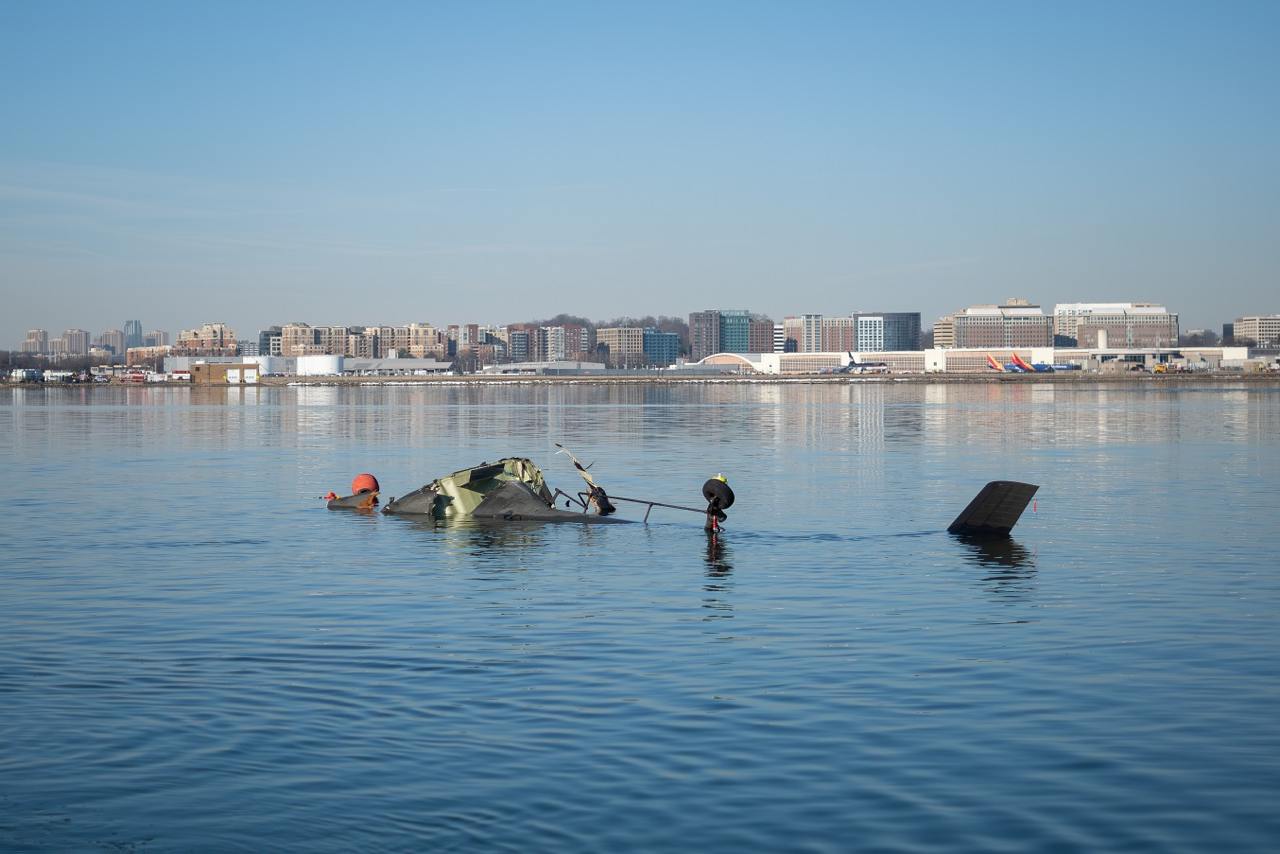


Wednesday's deadly collision between a United States Army Black Hawk helicopter and an American Airlines regional jet over the waters of the Potomac River has forced changes in the airspace, and the Federal Aviation Administration (FAA) is taking the drastic step of restricting helicopters from operating in the airspace near the Ronald Reagan Washington National Airport.
As per some sources, some of the airspace has already been placed under restriction owing to the ongoing search and recovery efforts over the crash site. But now the agency responsible for air traffic control is indefinitely barring most helicopters from using the low-to-the-ground routes that run under or parallel to the airport’s flightpaths.
The restriction exempts helicopters entering this airspace for lifesaving medical support, active law enforcement, active air defense, or presidential transport helicopter missions that must operate in this restricted area. Any helicopter operations outside these exemptions will be prohibited.
These restrictions will remain in place until the NTSB completes its preliminary investigation of the air carrier incident at which point it will be reviewed based on NTSB’s report.
The restricted area for helicopters includes:
U.S. Transportation Secretary Sean Duffy:
With the support of @POTUS and in consultation with the @SecDef, effective today, the @FAANews will restrict helicopter traffic around Ronald Reagan Washington National Airport airport.
“Today’s decision will immediately help secure the airspace near Reagan Airport, ensuring the safety of airplane and helicopter traffic,” said U.S. Transportation Secretary Sean Duffy.
“This is part of the U.S. Department of Transportation’s ongoing commitment to safeguarding our nation’s skies and upholding the highest standards of air travel safety. We will continue to support President Trump’s directive to achieve uncompromised aviation safety. The American people deserve full confidence in our aviation system and today’s action is a significant step towards restoring that trust.”
The airspace under scrutiny runs along the Potomac River from Memorial Bridge north of the airport to the Woodrow Wilson Bridge just to the south. That corridor is made up of numbered routes that control the flow of air traffic around Reagan National; the route numbers in question, Routes 1 and 4, were the ones used by the helicopter and passenger flight this Wednesday.
If helicopters plan to use these routes, it's mandatory to fly at very low altitudes, usually in the 200 to 300 feet range. This allows the helicopters to fly under the busy airplane traffic flying overhead; once the helicopters pass through the restricted altitude, they can fly higher subsequntly.
For this case, the American Airlines flight involved, a Bombardier CRJ700, was making its final approach when it collided with a U.S. Army Blackhawk UH-60 Helicopter (PAT25).
Some reports indicated the helicopter flew directly across the jet's path, which has raised questions about air traffic control and pilot awareness. Emergency response teams have so far recovered over 40 bodies from the icy waters of the Potomac River, with the investigation still very much active.
The close proximity issue between the plane and helicopters remained a threat earlier as well, just over 24 hours before the fatal collision, another regional jet had to go around for a second chance at landing at Reagan National after it was notified about a military helicopter active nearby.
The role of air traffic control is also being investigated. One air traffic controller was responsible for coordinating helicopter traffic and arriving and departing planes when the collision happened, according to a report by the Federal Aviation Administration. Those duties are often divided between two people, but the airport typically combines the roles at 9:30 p.m., once traffic begins to slow down. On Wednesday the tower supervisor directed that they be combined earlier.
Many, including President Donald Trump, are speculating that the Black Hawk was flying too high as it flew near the airport, thus putting it on a collision course with the passenger jet as it made its approach.
The reason to restrict air traffic around Reagan National by the FAA could be considered "drastic" is due to the importance of this airspace, which is used every day by multiple operators including media, medical and military helicopters, also the president's Marine One often seen flying that way.
On the proactive measues being taken, the helicopter traffic looks to be the right call as plenty of as-yet unanswered questions have arisen in the past few days pending investigation by competent authority.
On the investigation side, the process of recovering data about what caused this tragic collision began immediately after the event, with investigators from the NTSB focusing on two key items: the cockpit voice recorder and flight data recorder from both aircraft, as confirmed through various reports.
These black boxes were recovered, with NTSB officials stating they would assist tremendously in piecing together the sequence of events leading up to the crash.
NTSB Chairwoman Jennifer Hommendy described the investigation as an "all-hands-on-deck event," underscoring the urgency with which the agency is approaching the matter.
"We’re here to assure the American peoplethat we are going to leave no stone unturned in this investigation," stated Hommendy during the press conference following the incident.
The Potomac River crash was the deadliest in the U.S. soil since Nov. 12, 2001, when an American Airlines flight slammed into a residential area of Belle Harbor, just after takeoff from Kennedy Airport, killing all 260 people aboard and five people on the ground.
Expected is, there will be strict regulations to avoid such fatal crashes in the future, as the last major fatal crash involving a U.S. commercial airline occurred in 2009 near Buffalo. Everyone aboard the Bombardier DHC-8 propeller aircraft was killed, along with one person on the ground, bringing the total death toll to 50.
Related News......
